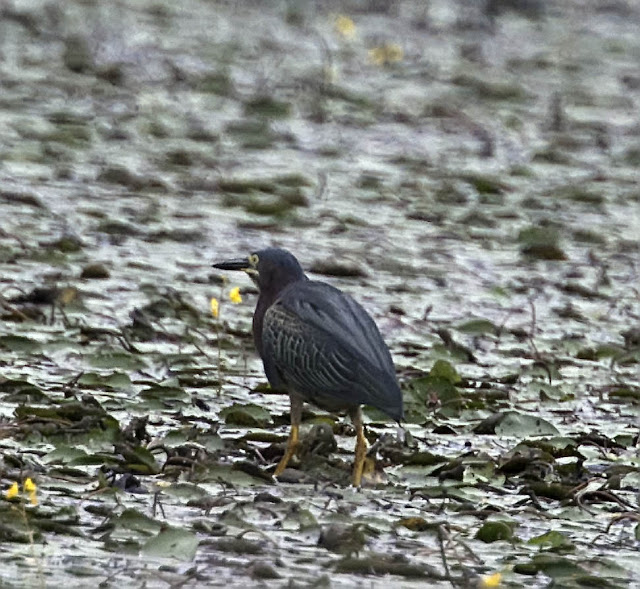One of my favorite walks is going up the trail to the top of Blac
k Mountain. It's an easy walk of just about 20 minutes.
The trail runs on smooth ground as it first traverses deciduous forest, then makes a sharp uphill turn into rocky terrain of white pines and hemlocks. Mountain Laurel thrives on the acidic soil under the dappled shade of these trees. Toward the top the forest lightens. Crooked Pitch Pines and low brush of Bear Oak, growing between the fractured sheets of granite, take over. It looks like Sierra Nevada in miniature.
The needles grow directly from the trunk allowing the Pitch Pine to recover and regrow rapidly after a fire. Its pitch was formerly used in ship building and the wood was favored for rail road ties since the abundance of resin makes it very resistant to decay
The warm granite polished smooth by glaciers in the ice age feels good under bare feet. You can still see where those glaciers, pushing big boulders along, ground the edges into the surface. These semi-circular indentations show the direction of the glaciers' travel.

Yellow-rumped Warbler foraging in a Pitch Pine.
A couple of days ago I heard Black-throated Blue Warblers singing at the lower level where the deciduous and the coniferous forests overlap.
But they are mostly occupied with finding food for their young.
As I was approaching the top I could hear a solitary Pine Warbler sing its rapid trilling song. At first I thought it was a Chipping Sparrow or Junco, but the location wasn't right.
My dog Chance, of course, loves these walks. He is a good dog, sticks mostly to the path and does not go off hunting unless he sees a squirrel, though he often gets bored during my slow stop-and-start progress, as I listen and look for birds, and heads back to wait for me at the car. .
After a good look around on top we headed back down and found on the way
a couple of deadly Amanita mushrooms. The color of Amanitas range from pure white (the "Angel of Death") over buff to bright red. They are fairly easy to recognize by the warts on their cap and the bulbous bottom of the stem.
'
We also encountered a harmless Garter Snake. It apparently felt threatened as it flickered its long tongue every time I moved my foot.
I am going to stay inside today in front of a fan with the drapes closed, as it's just too hot and humid outside, and read Kenn Kaufman's "The Kingbird Highway, the Biggest Year in the Life of an Extreme Birder" on my iPod. It's a GREAT book, inspired and inspiring. I would love to travel to the many places he is writing about, particularly Gambell Island in the Bering Sea.
Cheers! Now head over to World Bird Wednesday for a fantastic variety of birding blogs from all over the world!
Thanks for stopping by. Please leave a comment.



































